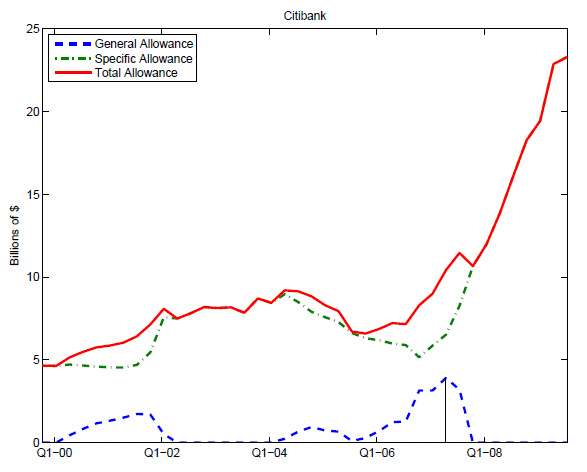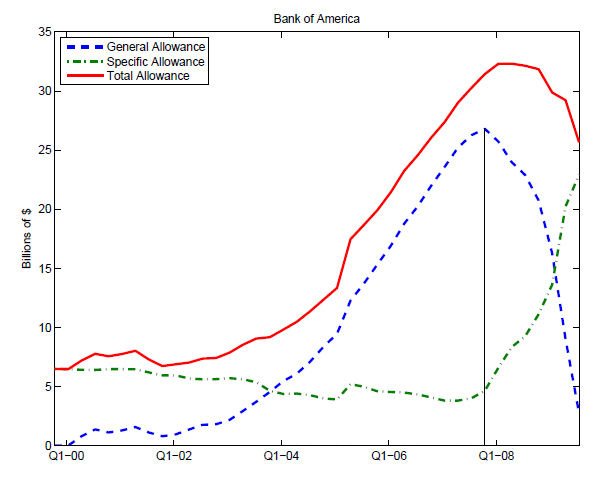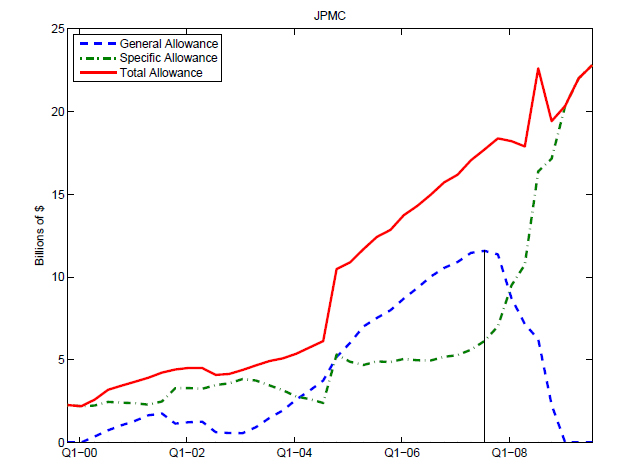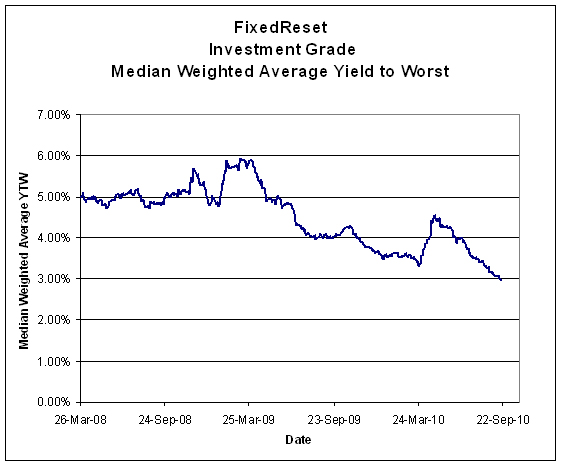I’m not the only one who thinks that the SEC’s extortion of $550-million from Goldman was conveniently timed:
Republican lawmakers asked SEC Inspector General H. David Kotz earlier this year to investigate how the SEC decided to file its April suit against Goldman, which settled the case in July for $550 million. The federal lawsuit alleged wrongdoing in a sale of mortgage securities called Abacus 2007 AC-1, and was filed as Senate Democrats were taking up the financial-regulation bill.
On the same day, the SEC released a scathing report by Mr. Kotz that concluded the agency had repeatedly missed chances to detect an alleged $7 billion fraud run by R. Allen Stanford, a money manager indicted by a federal grand jury last year. Mr. Stanford denies wrongdoing.
At a Senate Banking Committee hearing Wednesday, Mr. Kotz was questioned about the timing of the Goldman suit. He responded: “It would strain credulity to think it was coincidental.” He added: “I can’t give you a conclusion right now, but it was suspicious.”
Fabulous Fab is still in danger of losing his career over that thing … but that’s OK. He’s just a salesmen, while the SEC decision makers are heroic and selfless defenders of truth, beauty and small furry animals.
The boo-hoo-hoo brigade is practicing for contingent capital conversions:
Leona Miller, an 84-year-old retired beautician, says she was seeking safe and steady income from bonds two years ago when her Wachovia Corp. broker recommended she buy securities paying 9 percent interest.
Within six months, Miller had lost about 30 percent of her $20,000 investment and the bonds were converted into shares of Merck & Co. in a falling stock market. The San Diego resident, who still doesn’t understand what happened to her money, had purchased bonds known as structured notes that include built-in derivatives.
Sales to Miller and thousands of other individuals have driven structured note offerings up 58 percent to $31.9 billion through August, according to data compiled by Bloomberg. With U.S. interest rates near zero percent, investors are snapping up bonds such as reverse-convertible notes with knock-in put options or Leveraged CMS Curve and S&P 500 Index Linked Callable Notes, some with face values of as little as $10.
Breeden Capital Management manages a long-only equity investment fund utilizing active engagement to help undervalued, and often underperforming, portfolio companies improve performance and shareholder value.
Most people, however, are not aware that a lifetime in regulation equips one to have a keen – almost uncanny – knack for securities valuation:
Mr. Breeden has served since 2005 as Chairman and Chief Executive Officer of Breeden Capital Management LLC, the manager of a series of affiliated investment funds. He has also served since 1996 as Chairman of Richard C. Breeden & Co., LLC, a professional services firm specializing in strategic consulting, financial restructuring and corporate governance advisory services. Mr. Breeden graduated from Stanford University in 1972, and the Harvard Law School in 1975. After practicing law in the field of corporate financial transactions, Mr. Breeden worked in several senior government positions in the Administrations of Presidents Ronald W. Reagan, George H.W. Bush (41) and William Clinton. In 1989, Mr. Breeden served as Assistant to the President, and in that capacity he led successful efforts to develop a restructuring program for the U.S. savings and loan industry. From 1989-1993 Mr. Breeden served as Chairman of the U.S. Securities and Exchange Commission, after nomination by President Bush and unanimous confirmation by the U.S. Senate.
Sadly, there are some who still don’t get it:
The Employee Retirement System board of trustees voted via e-mail May 25 to terminate Greenwich, Connecticut-based Breeden Capital Management, according to information obtained from the city comptroller’s office under a public records request by Bloomberg News.
…
As of June 30, the value of the city’s $136.5 million investment was $133.3 million. That was 2.3 percent less than what it gave Breeden since October 2008. The Standard & Poor’s 500 Stock Index lost 2.5 percent in the period.The pension fund has paid the firm $6.2 million in fees, according to the comptroller’s records.
That’s over 2.00% p.a. Nice work if you can get it!
But all the schmoozing pays off:
Breeden also manages money for the California Public Employees’ Retirement System, or Calpers, and Maryland’s State Retirement and Pension System. The so-called activist investor buys stock in publicly traded companies and then presses for management changes to boost share prices.
…
Since investing with Breeden in September 2007, Maryland has lost 12.8 percent compared with a 7.45 percent decline for the S&P 500, according to state pension records. The value of Maryland’s investment with Breeden was $134.1 million as of July 31.Calpers has lost 4.5 percent investing with Breeden’s U.S. fund since June 2006, according to investment records for the quarter ending June 30. The market value of California’s investment in Breeden’s U.S. fund was $347.9 million.
The Boston Fed has released a working paper by José L. Fillat and Stefania Garetto titled Risk, Returns, and Multinational Production:
This paper starts by unveiling a new empirical regularity: multinational corporations systematically tend to exhibit higher stock market returns and earnings yields than non-multinational firms. Within non-multinationals, exporters tend to exhibit higher earnings yields and returns than firms selling only in their domestic market. To explain this pattern, we develop a real option value model where firms are heterogeneous in productivity, and have to decide whether and how to sell in a foreign market where demand is risky. Firms can serve the foreign market through trade or foreign direct investment,
thus becoming multinationals. Multinational firms are more exposed to risk: following a negative shock, they are reluctant to exit the foreign market because they would forgo the sunk cost that they paid to start investing abroad. We calibrate the model to match U.S. export and FDI dynamics, and use it to explain cross-sectional differences in earnings yields and returns.
DBRS has released its Methodology: Rating Sovereign Governments. It’s a little shy on specifics and examples to be of much interest.
The Canadian preferred share market continued its advance on continued heavy volume today, with PerpetualDiscounts up 12bp while FixedResets gained 4bp.
| HIMIPref™ Preferred Indices These values reflect the December 2008 revision of the HIMIPref™ Indices Values are provisional and are finalized monthly |
|||||||
| Index | Mean Current Yield (at bid) |
Median YTW |
Median Average Trading Value |
Median Mod Dur (YTW) |
Issues | Day’s Perf. | Index Value |
| Ratchet | 0.00 % | 0.00 % | 0 | 0.00 | 0 | -0.1459 % | 2,117.4 |
| FixedFloater | 0.00 % | 0.00 % | 0 | 0.00 | 0 | -0.1459 % | 3,207.6 |
| Floater | 2.88 % | 3.30 % | 79,335 | 18.98 | 3 | -0.1459 % | 2,286.2 |
| OpRet | 4.87 % | 0.64 % | 79,796 | 0.18 | 9 | -0.3709 % | 2,377.2 |
| SplitShare | 5.92 % | -28.92 % | 66,077 | 0.09 | 2 | 0.2046 % | 2,377.2 |
| Interest-Bearing | 0.00 % | 0.00 % | 0 | 0.00 | 0 | -0.3709 % | 2,173.7 |
| Perpetual-Premium | 5.65 % | 5.04 % | 142,470 | 5.34 | 14 | 0.2892 % | 2,004.7 |
| Perpetual-Discount | 5.49 % | 5.52 % | 198,631 | 14.57 | 63 | 0.1155 % | 1,985.9 |
| FixedReset | 5.21 % | 2.89 % | 297,607 | 3.29 | 47 | 0.0387 % | 2,281.5 |
| Performance Highlights | |||
| Issue | Index | Change | Notes |
| TRI.PR.B | Floater | -1.08 % | YTW SCENARIO Maturity Type : Limit Maturity Maturity Date : 2040-09-23 Maturity Price : 22.71 Evaluated at bid price : 23.00 Bid-YTW : 2.24 % |
| Volume Highlights | |||
| Issue | Index | Shares Traded |
Notes |
| NA.PR.P | FixedReset | 224,840 | RBC crossed three blocks, 49,000 shares, 50,000 and 94,200, all at 28.45. YTW SCENARIO Maturity Type : Call Maturity Date : 2014-03-17 Maturity Price : 25.00 Evaluated at bid price : 28.35 Bid-YTW : 2.78 % |
| TD.PR.E | FixedReset | 117,731 | RBC crossed 100,000 at 28.35. YTW SCENARIO Maturity Type : Call Maturity Date : 2014-05-30 Maturity Price : 25.00 Evaluated at bid price : 28.28 Bid-YTW : 2.78 % |
| BNS.PR.P | FixedReset | 108,330 | Nesbitt crossed two blocks of 50,000 each, both at 26.75. YTW SCENARIO Maturity Type : Call Maturity Date : 2013-05-25 Maturity Price : 25.00 Evaluated at bid price : 26.75 Bid-YTW : 2.51 % |
| MFC.PR.D | FixedReset | 105,521 | RBC crossed 72,400 at 27.70. YTW SCENARIO Maturity Type : Call Maturity Date : 2014-07-19 Maturity Price : 25.00 Evaluated at bid price : 27.51 Bid-YTW : 3.81 % |
| MFC.PR.B | Perpetual-Discount | 84,469 | Desjardins crossed 71,000 at 20.20. YTW SCENARIO Maturity Type : Limit Maturity Maturity Date : 2040-09-23 Maturity Price : 20.15 Evaluated at bid price : 20.15 Bid-YTW : 5.82 % |
| SLF.PR.B | Perpetual-Discount | 81,165 | RBC crossed 73,100 at 21.55. YTW SCENARIO Maturity Type : Limit Maturity Maturity Date : 2040-09-23 Maturity Price : 21.68 Evaluated at bid price : 21.68 Bid-YTW : 5.57 % |
| There were 55 other index-included issues trading in excess of 10,000 shares. | |||














































































































ENB Issues 30-Year Bonds at 5.12%
Friday, September 24th, 2010The Wall Street Journal reports:
Additonally, DBRS notes:
This is interestng in light of ENB.PR.A, a straight perpetual issued in December 1998 with a coupon of 5.5%, now quoted at 25.35-43 for a current yield of 5.42% and a YTW of -7.12% based on an immediate call at par.
If we say that the Seniority Spread should be 220bp for an Enbridge straight (a little tighter than the 245bp reported September 22 to account for its scarcity value as a non-financial) and tack on another 25bp for option effects on a par issue, we come up with a projected new issue for ENB at 5.12% + 225bp + 25bp = 7.62% interest equivalent or 5.44% as dividend … which means that, insofar as you can trust the 225bp and 25bp
wild guessesestimates, ENB.PR.A is fairly priced relative to their bonds.Whether Enbridge is happy about the 225 Seniority Spread is, of course, another question entirely.
Posted in Issue Comments | No Comments »